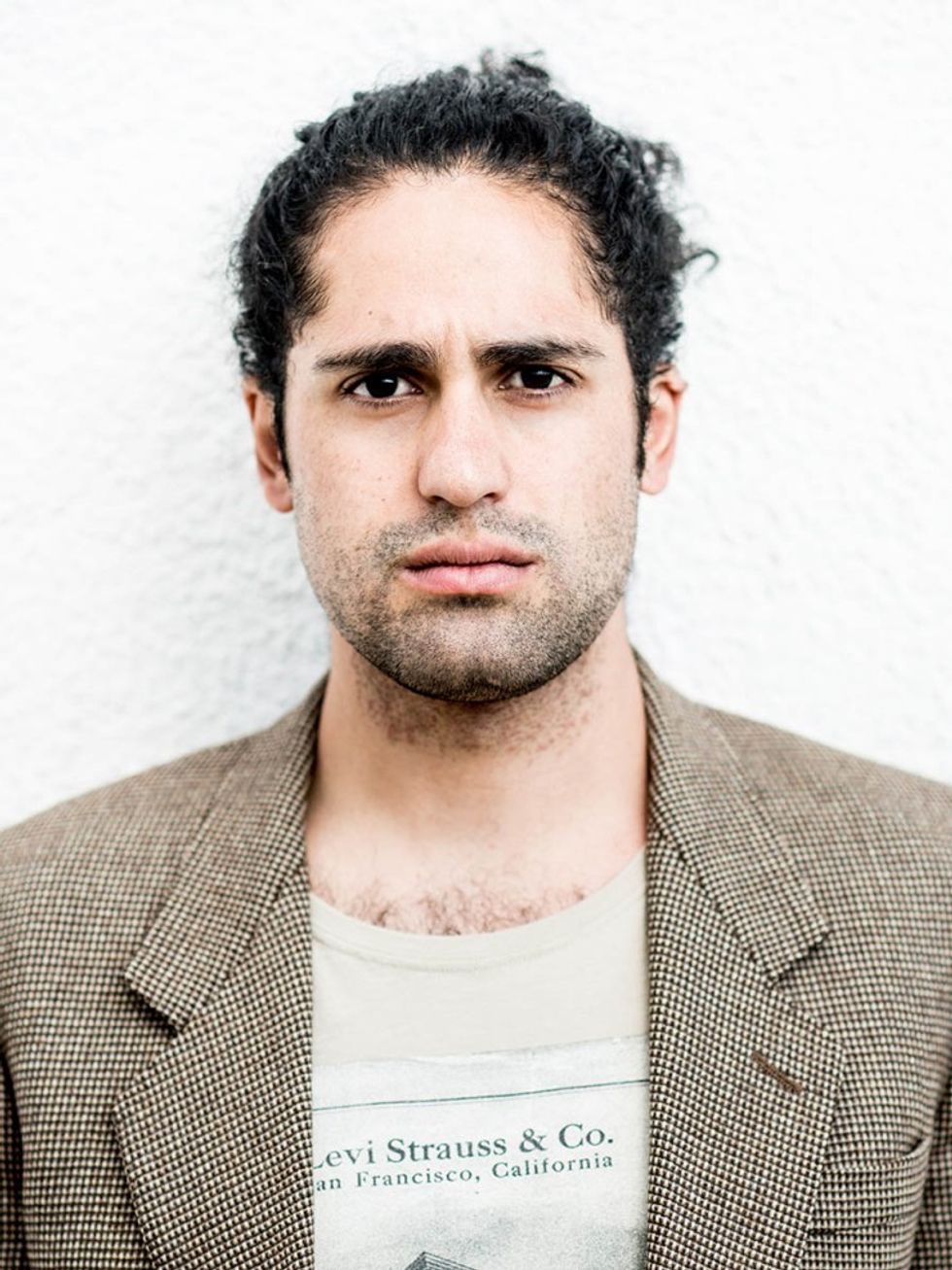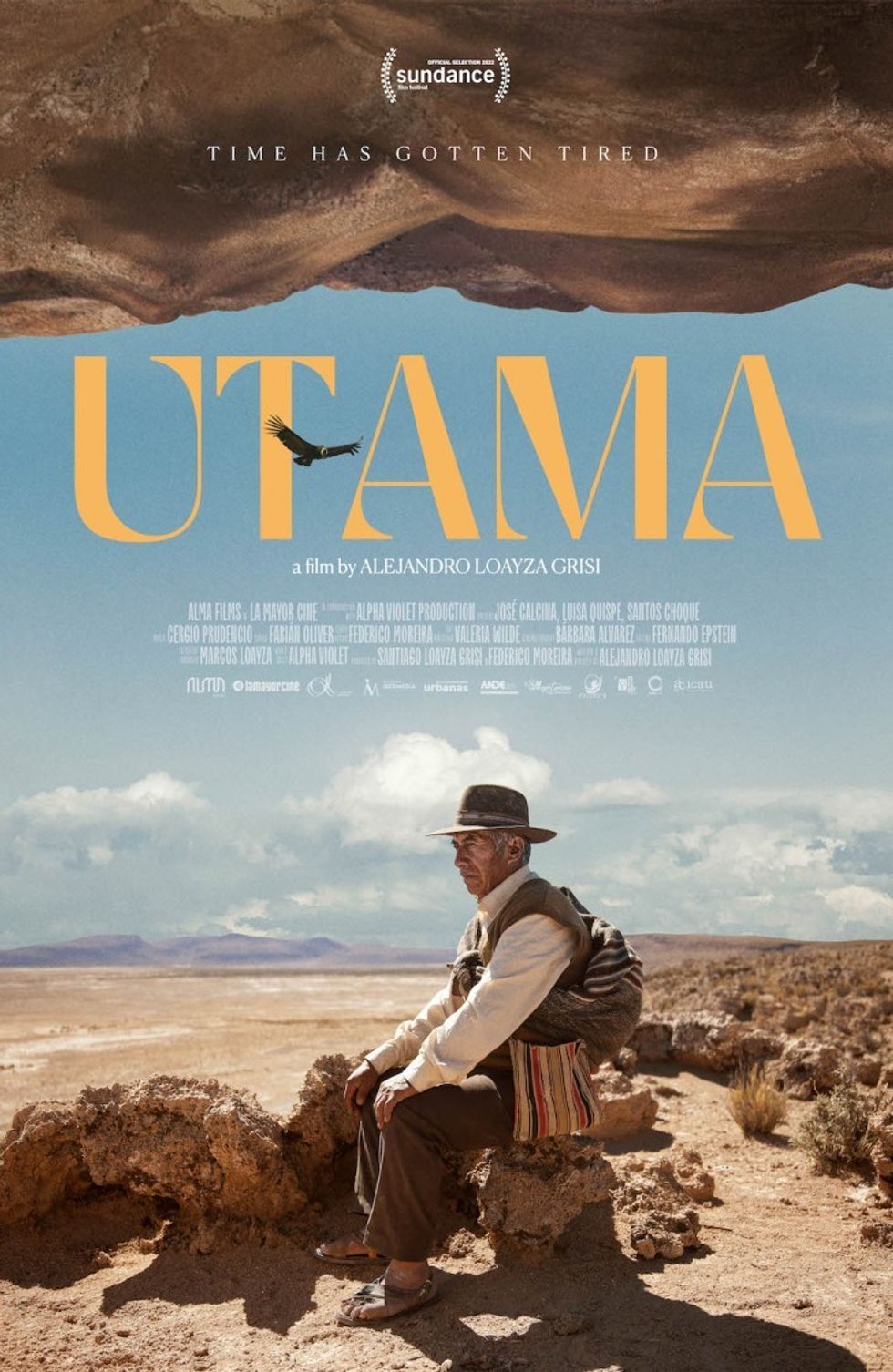How Shooting Super Wide with Super Harsh Light Created the Drought-Stricken World of ‘Utama’
Alejandro Loayza Grisi is one of the few filmmakers in the small-but-growing Bolivian film scene.

An accomplished photographer, Loayza Grisi was shooting a docuseries in the high country of the Bolivian Altiplano. There, he encountered an amazing couple living a traditional Quechua lifestyle—in the face of climate change and drought. Their faces told many stories. He knew they would be perfect in a film. The only problem? They didn’t want to be in it.
Living on location for several months leading up to production, for Loayza Grisi, all things found a way.
Loayza Grisi spoke with No Film School before the 2022 Sundance Film Festival premiere of Utama to talk about casting non-actors, shooting with DP Barbara Alvarez on the ALEXA Mini, and how to forget about beautiful sunsets when you really need high-altitude light.
No Film School: How did you decide to make this film, and how did you come up with your characters?

Loayza Grisi: I was doing a lot of travels inside Bolivia. I was shooting a documentary series about environmental issues. So I really got to know my country very well. It's a big country. I was very impressed by many stories and many characters and people. I think that's where the project began.
For the characters, I think I wrote them as a mix of people in my life, and they represent a little bit about my mother, my grandmother, my grandfather, my father and friends, and my ex-girlfriend as well. I think there's a little bit of everyone over there.
NFS: It's interesting because the film goes between Quechua and Spanish, depending on who is speaking. The grandparent characters prefer Quechua, whereas the grandson only speaks Spanish. Do you speak the Quechua language? How did that work to write into the script?
Loayza Grisi: Unfortunately I don't speak Quechua. It's not taught in Bolivia. That's something that they should do, at least a basic Quechua, or Guarani, or Aymara. We have many languages. For the script, I knew all the parts that were going to be in Quechua and got them translated.
NFS: I've seen some of your photographs, which are really exquisite. Did your photography background inform your filmmaking?
Loayza Grisi: I got to experience a lot in framing with photography, and I knew what kind of images I liked. So when I was shooting, I knew what images I was looking for. It also gave me a lot of experience with lenses. I knew where I had to put the camera in order to have the image I needed. Because sometimes you watch the director saying this, and they don't know exactly where. I think still photography gave me that.
I would advise all directors to always carry a camera, because it gives you this framing sensibility.
NFS: You mentioned shooting this documentary series where you met different people. Is this how you found your two actors who play the traditional Quechua grandparents in the film?
Loayza Grisi: When we were doing this scouting, I saw [Jose Calcina and Luisa Quispe] and I tried to convince them to be in it. But they didn't want to. I took a picture of them, and we did the entire casting with their reference. We looked for people like them. At first, we looked for actors in La Paz, but there's not a lot of actors. And none of them convinced me. So we went back and we went through the entire area, town by town, talking to all the elderly people we could meet, each time asking them if they wanted to act.
So we did it like that. I think it was three days going from town to town. At last, we got to convince Jose and Luisa. They were perfect for the film. They didn't want to do it, but we got the help of their nephew and he helped us convince them.

NFS: That’s fortunate, because they made for an incredibly moving and authentic performance on screen.
Loayza Grisi: I think they were able to relate to the story in a much better way than any actor could have, because it was very close to them. They gave this naturally. It was better to teach them to act than to teach some actors to do the things they do: to raise the llamas and to cut the potato as she does, to wind the yarn. It was better to teach them to act. Acting is a lot of about feeling, so I think of course they knew how to take their feelings to the film.
NFS: There are many panoramic wide shots of the landscape in the film. Can you share your visual strategy and your collaboration with DP Barbara Alvarez?
Loayza Grisi: I wanted the landscape to be another character. So I thought that it was very important to have very wide shots. When you're there, it's all so huge; it's so vast. There's not enough room in a camera to transmit that. So the wider, the better in this case. I wanted the landscape to absorb the characters because they are so lonely there.
That happens in Bolivia, it's a big country with a very small population, so you can drive for hours and you don't see a soul. I wanted that to be in the film.
With Barbara, I think the process was great because we saw the same film in our heads. We didn't fight, not even one time. We knew that it was important not to show the beauty of the light there, but the strength of the light. The sun is very high [at altitude] in the middle of the day, and we want to show that. It's not the best hour to shoot, it's not the most beautiful one. You prefer a more lateral light and magic hours. The sunsets over there are amazing. And I have beautiful pictures, but we didn't use them in the film because we needed to show something else. We didn't want the film to be too beautiful. We wanted to be real and transmit the way we felt there.

NFS: What was your production like? Were you shooting in the same location?
Loayza Grisi: I stayed there for I think four months. I lived over there. But the crew stayed only for 27 days. We shot in 27 days, but with breaks. Half the crew was in a very small lodge, another part of the crew was in another town because they didn't have enough room for all of us. I think the crew was bigger than the population of the town.
The location was very close from the hotel, only 20 minutes away. We shot everything in the same area, within 30 minutes. The farther location was the one in the river, that was one hour away. The places geographically speaking, it's between in the desert of Atacama and the desert of Uyuni Salt, the salt desert of Uyuni, and it's in between these two deserts. It’s very close to the border with Chile and in the south of Bolivia.
NFS: I know you mentioned wide lenses and using the natural light to have more of that harsh effect of the sun at high altitude. Did you bring a lot of equipment with you for production?
Loayza Grisi: We didn't have a big equipment because of budget, of course, but we didn't need a lot of equipment either. We had 10 days of Steadicam operators there, and we also had a very small dolly. But it was only used for I think, three scenes. The rest of the film is on a tripod.
With lighting, we knew that we would use natural light. Barbara took with her a couple of HMIs and a couple of LEDs to be sure. But mostly it was shot with natural light. With the camera was ALEXA Mini and the lenses were Zeiss super speed. These are vintage lenses, they don't do them anymore. And they’re very cool lenses.
NFS: Do you have any advice for other filmmakers?
Loayza Grisi: I think the biggest advice and the most common is to work. Work and work and work. I don't know who said that, but let the luck find you working. If you get lucky, it's because you work for that. So the biggest advice is to work just to work. And listen to your heart, to the story you want to tell. If it's powerful enough, then you should fight for it until it's done. Be truthful to your heart.













